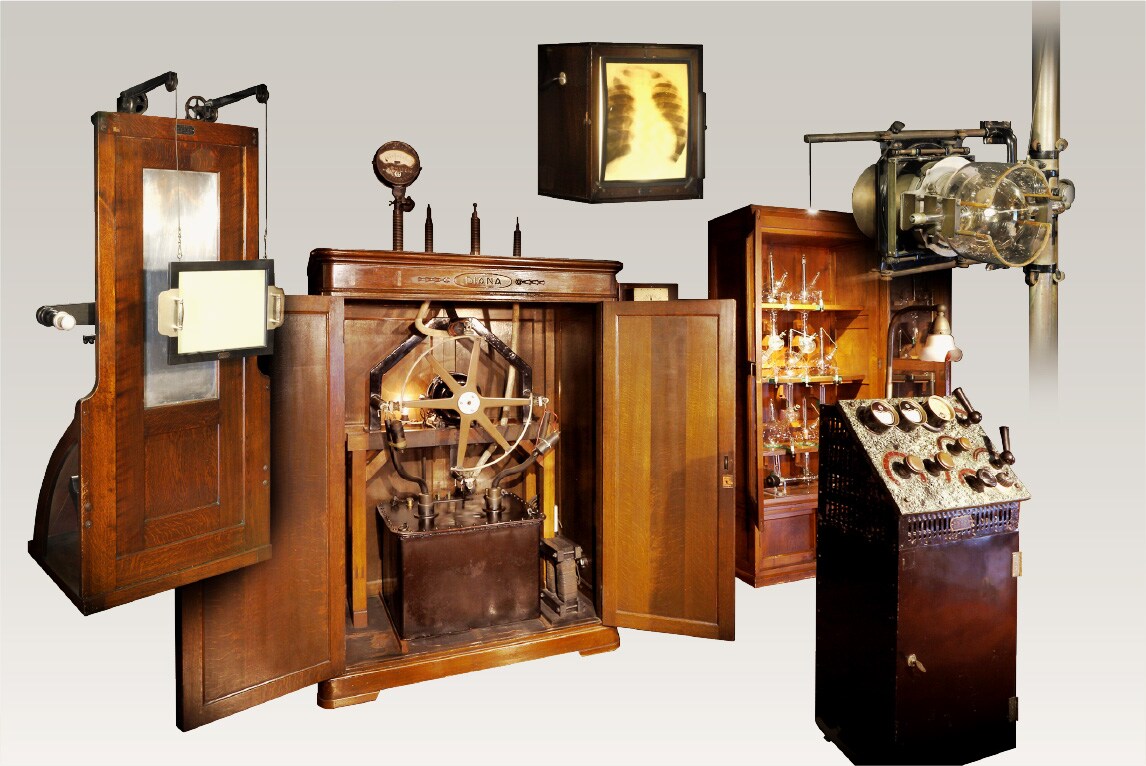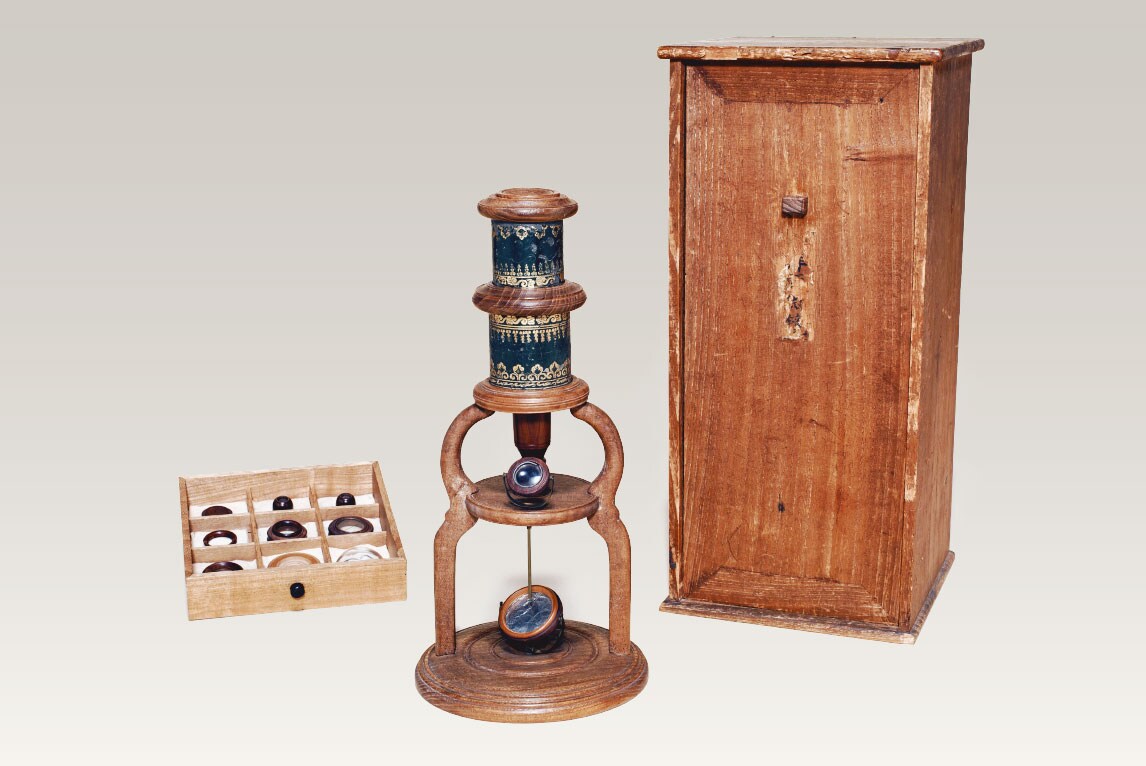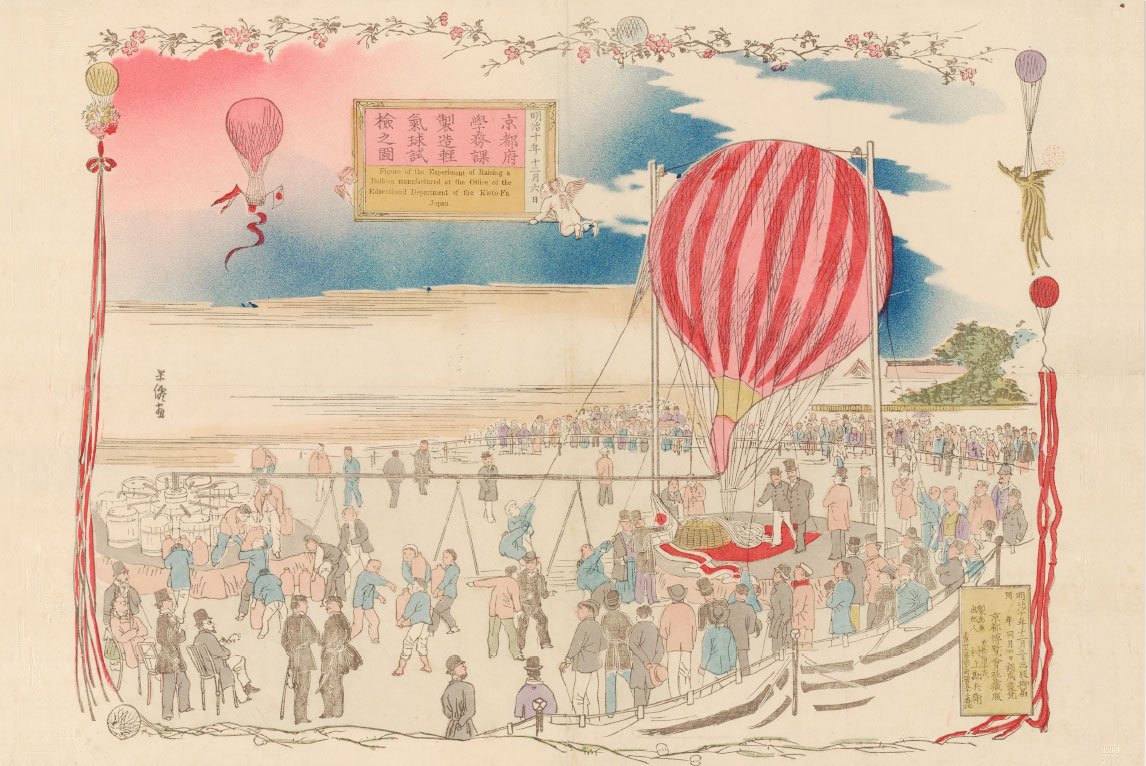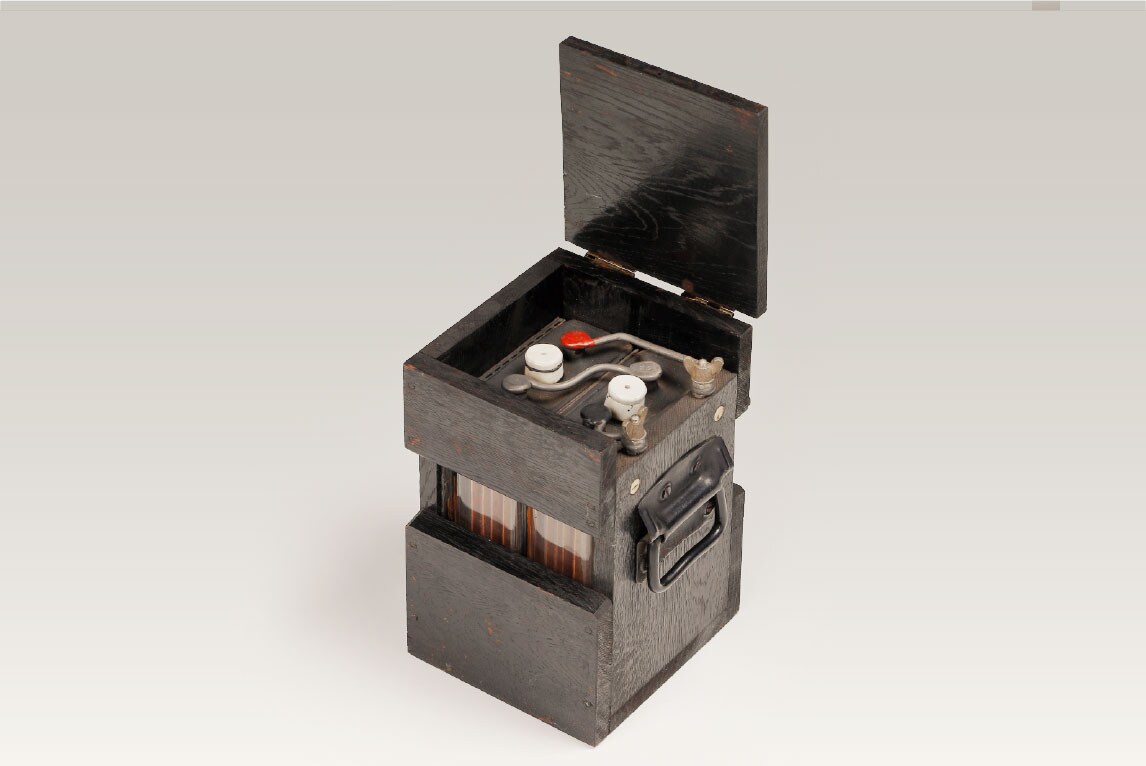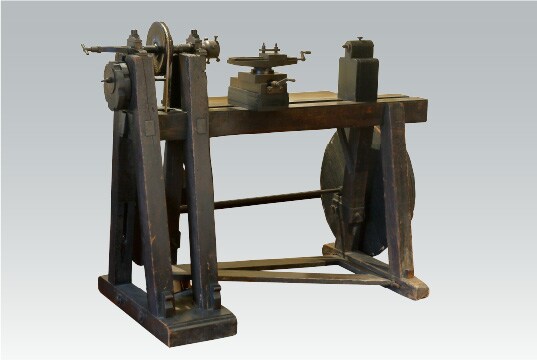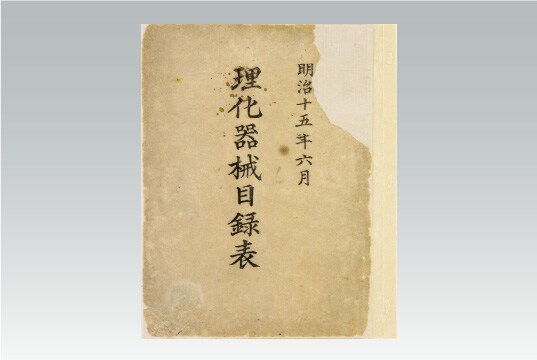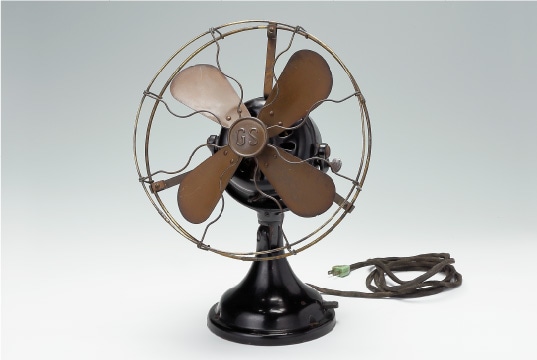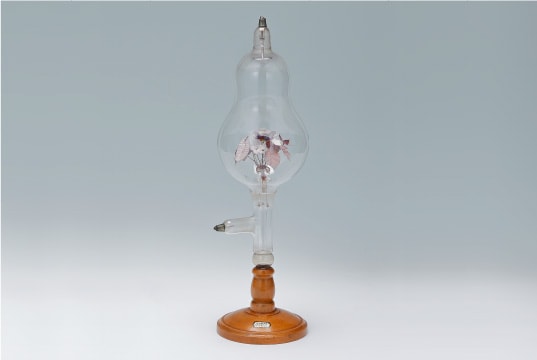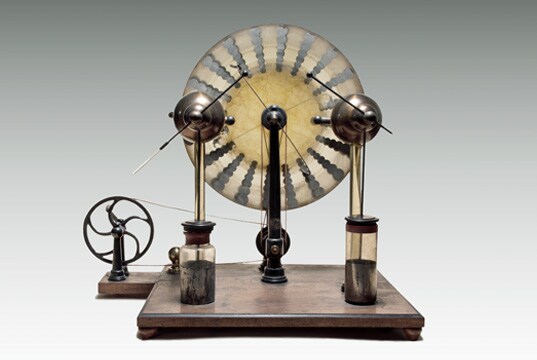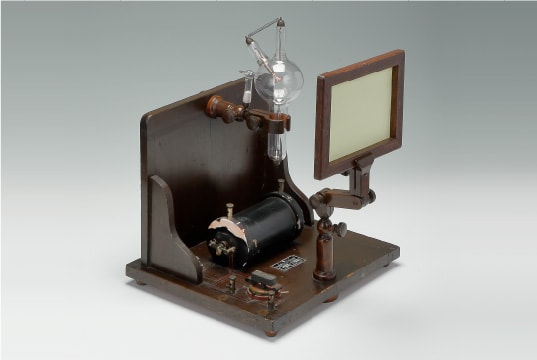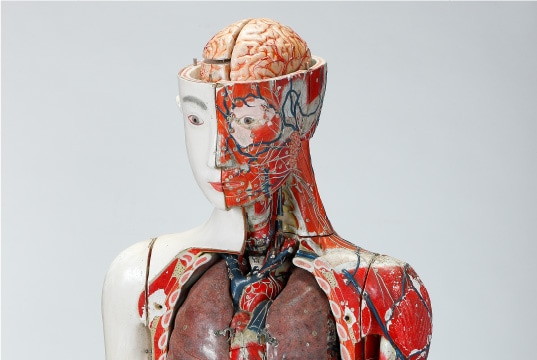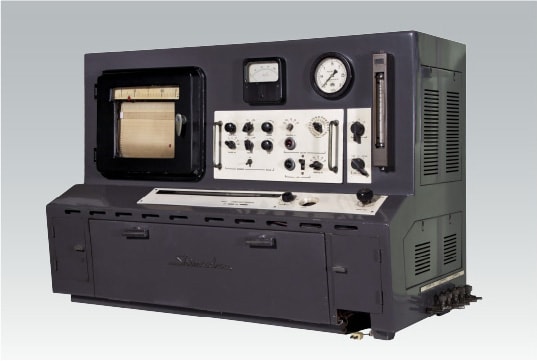“DIANA”: The First Domestically Produced Multi-Purpose General X-Ray System Manufactured from 1918 to about 1936
This system is composed of some key devices, such as the high-voltage power supply, an X-ray fluoroscopic stand, the X-ray generator, a controller, X-ray tubes, and a heating regulator. The power supply realized the high-voltage direct current necessary for shortening the time taken for radiography. Despite being made in Japan at a time when there was a general bias for imported products, it was overwhelmingly accepted in the market due to its versatility as a general-purpose system that could be used for multiple applications. It established Shimadzu’s reputation for expertise in X-ray technology.

